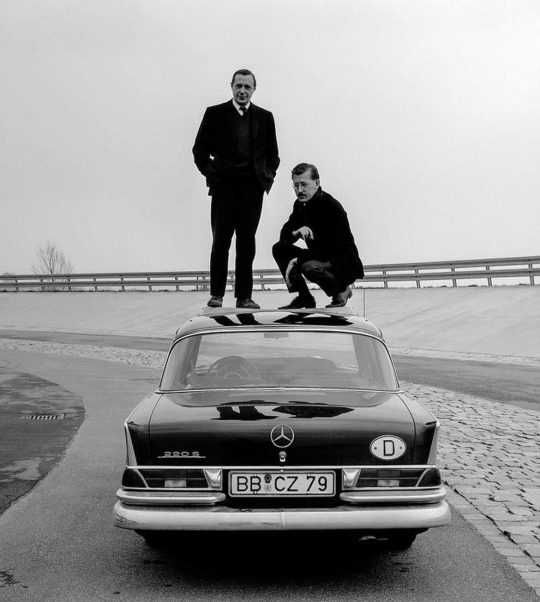#paul bracq
Text
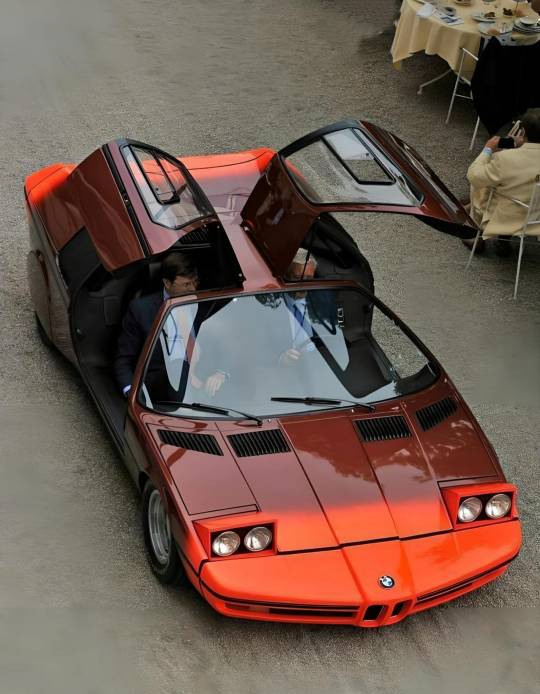
Le tout premier concept BMW 1972 était doté de phares escamotables et de portes papillon. - source Cars & Motorbikes Stars of the Golden era
157 notes
·
View notes
Text

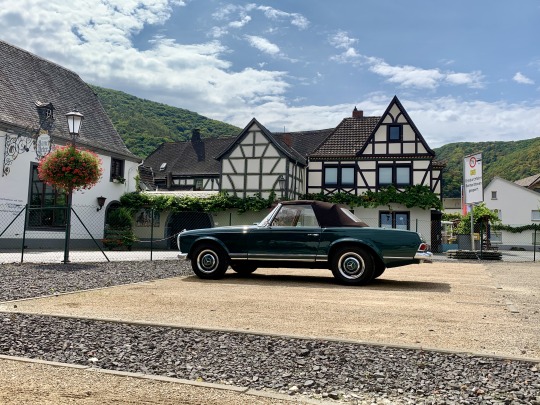
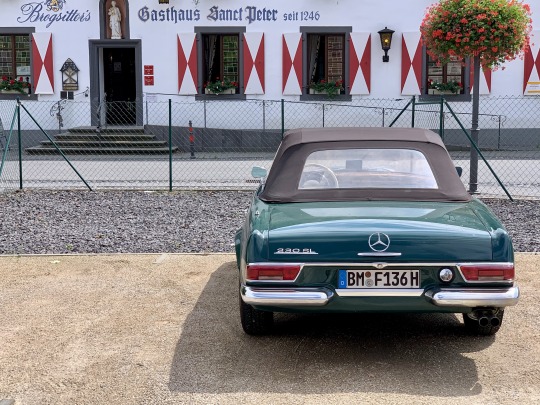
Germany, you can be so wunderbar! A lot of German history going on here
Mercedes-Benz (W 113) 230 SL Pagoda (1963–1967), a masterpiece by Paul Bracq and Béla Barényi 🍻
#mercedes benz#mercedes-benz w 113#paul bracq#Rudolf Uhlenhaut#Béla Barényi#mercedes pagoda#street fighting cars#autolandish#alfaromeole#vintage german cars#photographers on tumblr
45 notes
·
View notes
Photo

Paul Bracq, Matra M530 Alligator concept sketches, c. 1968.
#technology#automotive#concept car#concept art#Paul Bracq#Matra#M530 Alligator#Brissonneau & Lotz#France#1968
265 notes
·
View notes
Photo
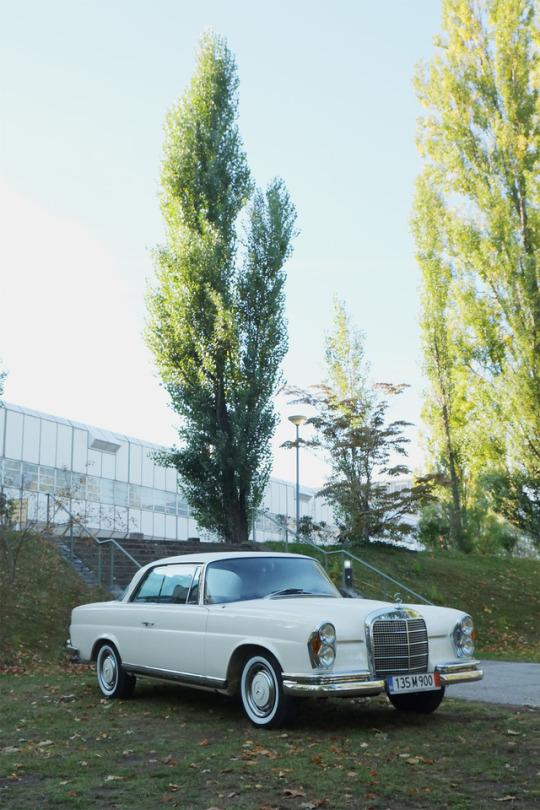


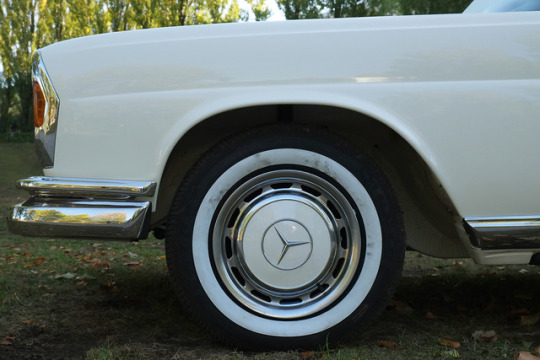


1960s Mercedes-Benz 280 SE coupé (W111).
A timeless classic and one of our personal favourites. Only the 2nd 280 on Autowahn, it took years to collect the entire W111 coupé range on this blog. Here’s an example of each incarnation of the series, which was available from 1961 to 1971. Enjoy!
• the 220 SE coupé
• the 220 SE convertible
• the 250 SE coupé
• the 250 SE convertible
• the 280 SE coupé
• the 280 SE convertible
• the 280 SE 3.5 coupé
• the 280 SE 3.5 convertible
• the iconic 300 SE coupé
• the 300 SE convertible
31 notes
·
View notes
Text

1968 Mercedes-Benz 280SL Pagoda by Legendary French Designer Paul Bracq
68 notes
·
View notes
Photo



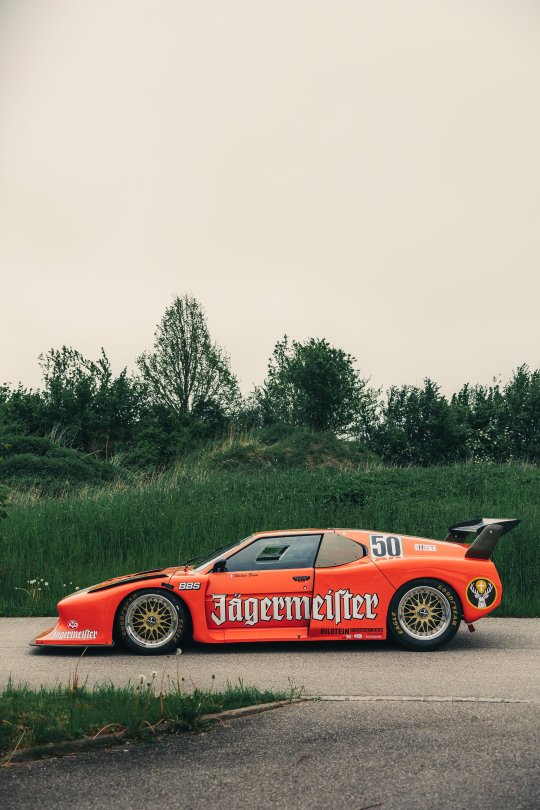






BMW M1 Turbo (the extraordinary case of the BMW M1 with 1000 hp)
Ignore the livery. Or don’t ignore it. Like with every other Jägermeister racing car, it might be hard to actually walk past this orange beast without giving the standout paint job at least one glance. It was designed to attract attention, just how Günter Mast — the man that gave his OK to race cars with the famous stag on the bonnet — intended. The truth of the matter is, however, that this particular car’s convoluted history is as complicated as the story of the BMW M1 itself. Therefore this car is not what it seems to be, as the orange Jägermeister livery stems from the imagination of the man that rebuilt the car, the legendary M1 whisperer Fritz Wagner. And if you ask anyone at Jägermeister headquarters about the car, they will potentially reply with a polite letter from their legal department.
To paraphrase Samuel Beckett: there’s nothing funnier than tragedy. And so, the story of the BMW M1 could be perceived as one of the automotive world’s funniest. The car was originally designed with the ambition to create the greatest, mid-engined racing car of all time. One that would beat Porsche’s dominating 935 in the all-important Group 5. A masterpiece made of speed and German reliability which, in reality, became a car that had to be reverse engineered to be sold for the road. All because of changes in racing rules and homologation, which stipulated how many cars had to be produced before a particular model was allowed to hit the track. The production number of 400 cars — which seems so minuscule by today’s standards — turned out to be the first problem on a long list of unfolding disasters.
In essence, the life of this beautiful, light, well-made machine that had been designed by Giorgetto Giugiaro, who reworked Paul Bracq’s original prototype, was plagued by bad luck and bad decisions. The fact that Lamborghini — who were supposed to produce it at their factory — went bust because of copyright fraud and embezzlement of funds didn’t help. However, it was the rushed solution to disperse production all over Europe that was the final nail in the coffin. Marchese built the car's tube frame, TIR molded the fiberglass, Italdesign mated the two and installed the interior, then the M1 was shipped from Italy to Stuttgart, where Baur would install the BMW hardware, after which in Munich BMW Motorsports would do the final touches and quality control. It made the M1 almost a quarter more expensive than any equivalent Ferrari or Lambo sold at the time. Case closed.
British generals in the second world war would often joke that Germans were not very good when it came to Plan B. This might be true. In the end, even if BMW’s head of Motorsport Jochen Neerpasch, the brilliant man that he is, thought of a way to market the M1 with the Procar series, in which F1 drivers like Niki Lauda, Clay Regazzoni, and Nelson Piquet would race the cars against privateers, as a prelude to the weekend's Formula 1 race, too few examples were made for the car to ever officially leave Group 4 as was originally intended. Later on, those teams who managed to finally race in Group 5, years after BMW abandoned the programme in order to enter to F1, found the M1 simply uncompetitive. Even the twin-turbocharged models built by Schnitzer, which developed 800 hp and more from their straight six engines, were plagued by problems.
his finally brings us to this particular, rather unusual example. It was allegedly built for the famous Walter Brun racing team, who later on won the Group C World Championship with a Jägermeister-liveried Porsche 956. Brun’s friendship with Paul Rosche, the man who turbocharged the BMW 2002, gave rise to the idea of installing the M88 turbo engine originally planned for the March Group-5 car into a modified M1 Procar chassis wrapped into Group 5 bodywork. However, the car was never raced. Why? Even at BMW no one knows.
Particularly good news considering that back in the day, when this 1090 kg machine was put on a dyno, it put out 1000 hp and 930 NM of Torque. A reading obtained just before the machine broke while the car apparently still wanted to keep going. Now in the hands of a new owner who intends to race it regularly, it will have plenty of opportunity to shine. And so a new chapter unfolds…
#BMW M1 Turbo#Jägermeister#porsche#Ferrari#lamborghini#Group 4#Niki Lauda#Clay Regazzoni#Nelson Piquet#Group 5#Walter Brun#Porsche 956#BMW 2002
205 notes
·
View notes
Text

1931 Alfa Romeo 8c 2300 Le Mans & Ford Trimotor - Paul Bracq
13 notes
·
View notes
Text

Dimanche 8 janvier 2012.
Parrainée par Claude Lelouch, une journée réunissant de nombreux véhicules ayant été utilisés pour des tournages de films a eu lieu ce dimanche. Pour la 12ème traversée de Paris “les anciennes font leur cinéma, j’étais plutôt attiré par la Ford Mustang blanche de “Un homme et une femme”, film mythique que j’avais vu à Deauville pendant les épreuves du baccalauréat de …. Je ne me souviens plus, cela fait trop longtemps ! J’étais avec mes copains Boris, Georges et Thierry, et je dois dire que le film m’avait plus intéressé que les épreuves du bac, surtout qu’il venait de sortir et que l’action se passait devant le lycée… enfin presque ! Jean-Louis Trintignant, et surtout la merveilleuse Anouk Aimée avaient eu raison de mes velléités d’études (en fait les désirs que mes parents me prêtaient : d’abord médecin, puis voyant que cela ne marchait pas dentiste - comme le voisin de l’étage inférieur- puis mon père a voulu que je reprenne son artisanat de maroquinerie- et là ce fut le glas de toutes leurs espérances).
J’ai vu Claude Lelouch, la Ford Mustang du film, mais surtout cette somptueuse Bugatti Atlantic de 1938 qui se dégageait du lot.
Selon Paul Bracq (un styliste de voitures renommé), « l’Atlantic est un monument dans l’histoire de la carrosserie française ! Mieux qu’aucune autre automobile, elle exprime l’esthétique latine.
J’ai trouvé dans cette voiture des formes féminines et rondes, avant-gardistes et superbes. J’ai rêvé aussi que c’était la voiture de Batman (créé en 1939) et qu’il allait s’en servir pour rendre une vraie justice à tous ceux qui en ont besoin.
Batman, réveille-toi. Tu as beaucoup de travail à faire.
6 notes
·
View notes
Text
1968 Mercedes-Benz 280SL Pagoda by Legendary French Designer Paul Bracq
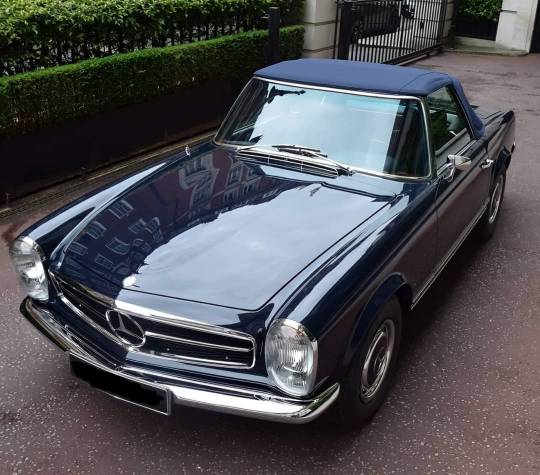
6 notes
·
View notes
Text
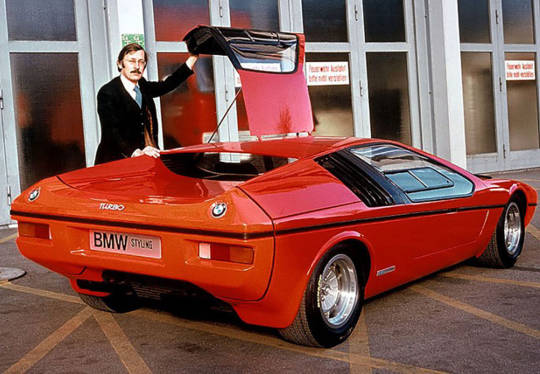

Le chef-d’œuvre de Paul Bracq, directeur du design de BMW. - source Cars & Motorbikes Stars of the Golden era.
72 notes
·
View notes
Text

A German work of art in a stunning brown-bronze metallic color combination, this 1966 Mercedes-Benz 300 SE Coupe is elegant in form and performance. Frenchman Paul Bracq designed and styled several models for Mercedes-Benz for more than a decade, when he was chief of design.
2 notes
·
View notes
Text
On a closed circuit, more precisely on the Nardo track, Michelin test-driver Jean-Philippe Vittecocq at the controls of the Oxia managed to overcome the top speed of 350km/h and reached 100km/h in 3.6sec. The Peugeot Oxia's weight was fixed at 1374 Kg, it wore Michelin 235/45 ZR17 tires at the front and 285/40 ZR17 at the rear, and mounted on magnesium rims and equipped with an electronic monitoring system, which measured the temperature and pressure and if something went wrong the system would limit the speed until the tire was fixed.
The Oxia was equipped with a six-speed manual gearbox, with a double-disc hydraulic clutch, with two electronically controlled self-lockers, one at the front and one at the rear. The engine is managed by Bosch Motronic, which uses two ECUs, one for each cylinder bank. It also has two electromagnetic injectors for each cylinder, and at low rpm only one works. Suspension is double wishbones at the front and rear.
Developed with a view to meeting the demands of driving duties and future communication developments, the cabin promotes the circulation of air and sound. Oxia has a communication center coupled to a telephone and with PC and peripheral equipment. The on-board computer allows the adjustment of the air conditioning, access to the driving and navigation database, it also has a hi-fi system. Inside, you can see several aluminum elements in anodized blue and with Alcantara leather upholstery, which was designed by Paul Bracq, combining functionality with elegance.
instagram
0 notes
Text
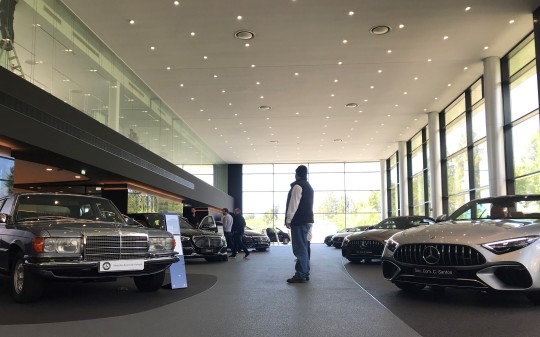
Soc. Com. C. Santos e Mercedes-Benz Club Portugal reúnem Classe S históricos
O novo showroom da Sociedade Comercial C. Santos, na Maia, junto ao aeroporto do Porto, recebeu, no sábado (22 de abril), exemplares clássicos do Mercedes-Benz Classe S. A iniciativa partiu da Sociedade Comercial C. Santos e do Mercedes-Benz Club Portugal.
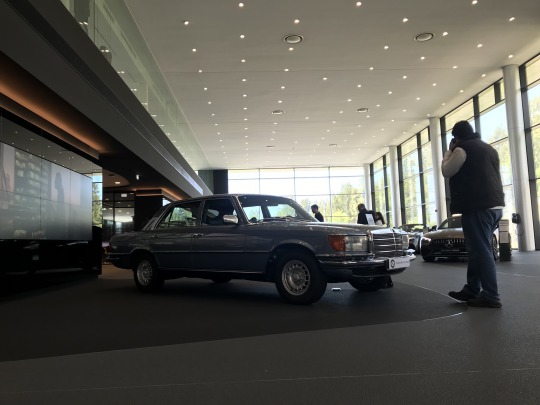
O novo espaço da Sociedade Comercial C. Santos foi visitado por um restrito grupo de unidades dos icónicos W108 e W111. O showroom teve ainda exposta uma unidade W116, além de Mercedes-Maybach Classe S e EQS Limousine da atual gama, bem como nove unidades do sempre marcante Mercedes-AMG SL.
A caravana dos raros modelos W111 e W108 estacionou no parque da Sociedade Comercial C. Santos junto ao aeroporto do Porto após um curto percurso entre Leça da Palmeira e as instalações do representante Mercedes-Benz. O grupo de apaixonados pela Mercedes-Benz pôde conversar sobre este e outros modelos que marcam a história do automóvel.
Reunir história num showroom do futuro
“O Classe S é um dos ícones da Mercedes-Benz. As várias gerações foram um exemplo de robustez, fiabilidade, segurança e tecnologia. É muito interessante para nós trazermos um grupo de apaixonados pela marca e pelo modelo à Sociedade Comercial C. Santos”, refere o presidente do Mercedes-Benz Club Portugal, Manuel Neves.
“As várias gerações Mercedes-Benz Classe S discutem o ‘título’ de melhor automóvel do mundo. Como o novo showroom da Sociedade Comercial C. Santos também é um exemplo de tecnologia, reunimos condições para esta excelente manhã”, afirma o relações públicas da Sociedade Comercial C. Santos, Aquiles Pinto.

Fintail substituíram “Pontons”
Apresentado no Salão de Frankfurt de 1959 para substituir os modelos “Ponton”, o Mercedes-Benz W111 ficou conhecido por “Heckflosse” na Alemanha, “Fintail” nos mercados anglófonos e “Rabo de Peixe” em Portugal, devido ao seu design inovador na traseira, elaborado por Friedrich Geiger. Em 1961, ao modelo de quatro portas juntaram-se os coupé e cabriolet, com design de Paul Bracq. Entre 1959 e 1971 (berlina de quatro portas de 1959 a 1968 e coupé e cabriolet de 1961 a 1971) foram produzidas 370 807 unidades do modelo.
O W111 foi um modelo revolucionário para a época por já contemplar zonas de absorção de energia em caso de impacto, tornando-o num dos automóveis mais seguros da sua geração. Conhecido pela sua fiabilidade, o modelo também teve reconhecimento na competição e venceu o Rali de Montecarlo de 1962 com a piloto Ewy Rosqvist.
“Revolução” na traseira e grelha frontal
O Mercedes-Benz W108 foi apresentado no Salão Automóvel de Frankfurt de 1965 e substituiu o W111. A equipa de designers liderada pelo francês Paul Bracq operou bastantes melhorias neste W108 face ao antecessor. Destaque para o pára-brisas 17% maior, os mais 60 mm de altura e os mais 15 mm de largura. Mas não são estas as diferenças mais visíveis. Com efeito, um dos aspetos mais diferenciadores do W108 face ao W111 foi o desaparecimento do chamado “Rabo de Peixe” na traseira. Outro foi a grelha frontal ter começado a transição de vertical para mais baixa e mais larga.
No topo da gama W108 estava o modelo 300 SEL (designado por W109). Como o W108/W109 estava disponível apenas como carroçaria de quatro portas, os coupés e cabriolets W111 e W112 de duas portas, por também serem quadrados (sem “Rabos de Peixe”) preencheram esses nichos e são frequentemente confundidos com os W108/109 de duas portas.
O W108/W109 foi produzido entre 1965 e 1972 (1973 na América do Norte), ano em que foi substituído pelo modelo W116. Ao longo dos sete anos de produção, saíram das linhas de montagem da Mercedes-Benz 383 361 unidades W108/W109.

Primeiro Classe S e estreia do ABS
Mercedes-Benz W111 e W108/W109 são, por legítimo direito, considerados Classe S, mas ainda não tinham essa designação oficial. O nome S era já usado desde o fim da década de 1940 pela Mercedes-Benz para designar os seus topos de gama, mas apenasa partir de 1972, com o W116, é que o S (letra que também era usada nos modelos sobrealimentados da década de 1920) passou a identificar uma gama completa. Com o S (do alemão sonderklasse, ou “classe especial”), a Mercedes-Benz iniciou uma lógica de nomenclaturas que, a partir de 1993, foi estendida a outros modelos da marca, como o Classe C, E ou G.
Foi precisamente um W116 propriedade do Mercedes-Benz Club Portugal que esteve exposto este fim de semana no showroom da Sociedade Comercial C. Santos na Maia-Aeroporto, ao lado de unidades Mercedes-Maybach Classe S e EQS Limousine da atual gama da marca.

O primeiro Mercedes-Benz Classe S da história ficou conhecido por várias inovações tecnológicas. Dessas podemos destacar o facto de ter sido o primeiro modelo turbodiesel (entre vários motores a gasolina e diesel atmosféricos) produzido em série pela marca. Considerado Carro Europeu do Ano em 1974, o W116 foi o primeiro automóvel de produção do mundo a incluir sistema de travagem anti-bloqueio eletrónico (do alemão antiblockier-bremssystem), mais conhecido pela sigla ABS. A tecnologia foi disponibilizada pela Mercedes-Benz neste modelo a partir de 1978 (como opcional).
A produção do W116, entre 1972 e 1980, totalizou 473 035 unidades. O W116 foi sucedido pelo Classe S W126 (apresentado oficialmente em 1979).
0 notes
